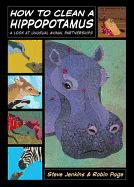
As you turn the pages of this beautifully illustrated book of poems, you begin to take a walk through the woods through the course of the four seasons. Each poem is told through the eyes of a different woodland character. The poems are both humorous and clever.
Reading Level:
Lexile: 620
Genre/Theme:
Poetry
Seasons
Subject:
English Language Arts
Science
Teaching Ideas for a 3rd Grade Class:
Web Resources: http://deborahruddell.com/whiff.htm offers ideas from the author such as having students make connections and illustrate their favorite poem from the book.
http://www.instructorweb.com/lesson/seasons.asp offers a lesson plan on the four seasons including a writing activity and printables to help students compare and contrast the four seasons.
Suggested Delivery: Pair Reading
Before Reading:
Vocabulary to Introduce: baffled, distinguished, grumbling, marsupial, quavery, feud
Preview text with whole class and discuss the title of each poem. Have students make a prediction about each poem. This book follows a natural pattern. Have students become "poetry detectives" to see if they can "find" the natural pattern of the text: the four seasons.
During Reading:
Students take turns reading to a partner. Have students write the title of each poem along with the season the poem is occurring in.
After Reading:
Have students work in small groups to discuss their favorite poem from the text. Have them discuss why they chose that particular poem. Do the students notice anything about the the seasons in the book? The poems are told in the sequence of the four seasons. Have students write and illustrate their own poem, being sure to include one of the four seasons and an animal.
Ruddell, D. and Rankin, J. (2009). A whiff of pine, a hint of skunk: a forest of poems. New York: Margaret K. McElderry Books.




